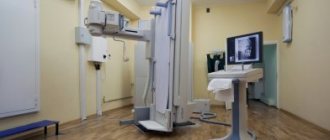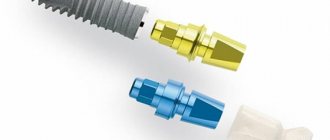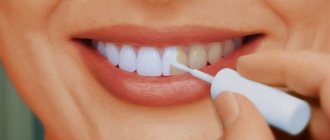How to make an impression of a key?
To get an impression
, apply a thin layer of plasticine no more than one and a half millimeters thick to the metal plate.
The plasticine is lubricated with oil to prevent it from sticking to the key. Press the key
onto the plasticine so that it leaves a clear, even imprint.
Interesting materials:
When should you dig up rye? When should you dig up green manure? When should you plant Remontant strawberries? When should I register my quadcopter? When should Mulard ducks be slaughtered? When should you plant currant bushes? When should you pick winter apples? When should you fertilize blueberries? When should nitrogen fertilizers be applied? When should you dig up tulip bulbs?
How to prepare a baby model for “work”?
It is best to carry out work on making casts of arms and legs when the small model is calm. Pick a moment. This could be a dream or watching your favorite cartoons. You can find cartoons by following the link: "Cartoons for the little ones." There are sleepy children with whom you can do anything in this state. There is an interesting article about a child’s sleep: “Does your child sleep poorly? We are looking for possible causes and finding a solution to this problem.”
If you decide to carry out the work of making a cast while the child is awake, then be sure to make sure that the baby is in a good mood, he is not hungry and joyful. Does the baby move his fingers slightly during the impression? It doesn’t matter, it won’t spoil the final result, since the mass will better get into all the folds and the handle or leg will be more prominent. In this matter, the main thing is calmness; holding someone in a position will not give the desired result.
If the baby is still very small, then during the process, in order to calm him down, sing a lullaby. You can see options for lullabies in the article: “Lullabies for babies.”
Kits for making 2D and 3D impressions yourself
Recently, a copied souvenir plaster hand has become popular among ordinary people. How to make it yourself is described in detail in the instructions for ready-made modeling kits. This kit is ideal for those who want to try their hand at volumetric casting, but are unable or unwilling to understand the brands of molding compounds and plaster.
The kit will cost more than separately purchased components. But manufacturers focus on the convenience of this configuration. In addition, they provide a quality guarantee on their materials. The set includes a dry hypoallergenic mass for molds; it is easy to prepare by adding water in the required ratio. High-strength model purified gypsum is also available.
The kit for making casts of simple hand or foot impressions includes a reusable plastic molding compound. Before use, it is kneaded, an impression is made and plaster is poured into it. After solidification, the casting is removed. If re-filling is not expected, the mold is kneaded again until soft and stored in a plastic bag.
Design options for impressions
Making a cast of the arm and leg is half the battle. It still needs to be beautifully decorated. In addition to making a cast, it also needs to be beautifully designed. There are many design options, because it all depends on your imagination. Here are some design options:
1. In the form of a figurine. To do this, cover the resulting cast with silver or bronze spray paint and place it on the base. Sign and date the base and receive a miniature figurine.
2. Photo frame with a cast. Glue a photo of your child and a cast of a hand and foot into a regular photo frame. In addition to these things, you can put a tag from the maternity hospital, a pacifier and other paraphernalia of the newborn “under the glass”.
3. In the form of a pendant.
Make a hole during making. After the casts of the arms and legs have hardened, thread a beautiful ribbon through this hole and hang it on the wall in the children's room. You can read about decorating a room for a newborn in the article: “Children’s room for babies.” Author of the publication: Zoya Kiseleva
Key Features
The main features and advantages are:
- lack of license and special permits
- minimum investment
- high profitability
- quick payback
- opportunity to show your creativity
- Great part-time job for moms on maternity leave
- It is not necessary to have an office; you can work from home
- There is practically no seasonality
Technology
The technology for making impressions of handles is quite simple.
- A very plastic, soft, reusable material is used, which allows even the smallest children to take impressions from birth.
- The process of taking an impression takes several minutes. After which the master takes away the casts and fills them with gypsum solution at the workplace; after the gypsum has hardened, the product is processed, if there are defects, and left to dry further.
- While the impressions are drying, you can process the photo in the program.
- Next, the composition is assembled - all the elements are glued to the base and inserted into the frame.
The time required for the production of one fully designed composition is: 1 day, of which 12 hours for drying the casts (this process can be accelerated by drying the casts in the oven), immediately going to the client, processing the photo and printing it.
Methods for making a hand from plaster
There are two ways to make such an item:
- An impression is made using a rubber glove filled with plaster.
- A cast of your own hand.
For each of these methods, it is worth remembering the most important thing - if possible, avoid the formation of air bubbles when filling the mold with plaster, or reduce their presence to a minimum. The fewer bubbles there are, the less time you will need to sand the product and eliminate imperfections.
The photo below shows an example of bad work. Where air bubbles have formed, unsightly cavities remain that cannot be corrected by sanding.
Let's consider both methods of making a plaster hand with your own hands.
Requirements
Making a reliable impression of the patient’s jaw rows directly depends on the quality and physicochemical characteristics of the impression material.
For this reason, a number of requirements are put forward to it, the key ones being the following points:
- High plasticity and viscosity. The material used must fill absolutely all elements located in the contact zone in order to convey the exact relief of the prosthetic bed.
- Elasticity and high resistance - when removing an impression from the oral cavity, it is necessary that it retains the resulting shape, without contraction or deformation.
- Non-toxic. Contact of the impression mass with the tissues of the oral cavity should not cause irritation.
- Allowable curing speed. The duration of hardening of the impression material should be convenient for the specialist and allow him to perform all the required manipulations for making the impression.
- Balanced interaction with water. When in contact with saliva particles, the impression material should spread evenly over the prosthetic bed and displace moisture from its surface, which eliminates the risk of pores forming on the impression.
- No unpleasant taste or smell.
- Preservation of quality characteristics upon contact with elements of the oral cavity. When introducing the material into the oral cavity, its spontaneous spreading or crumbling is not allowed.
- Maintains shape during transportation.
Mandatory types of preparation for dental prosthetics and manipulations prescribed on an individual basis.
Read here about the stages of making porcelain crowns.
At this address https://www.vash-dentist.ru/protezirovanie/nesemnyie-p/voskovoe-modelirovanie-zubov.html you will learn about the purpose of wax modeling of teeth.
When does recoding become necessary?
You may need to recode a lock in different situations, this applies to replacing a door, losing keys, etc. Let's consider the most common situations when you need to change the lock code:
- Carrying out repair work. If hired workers use your door key, it is worth replacing it, as the integrity of all people cannot be guaranteed. The worker could make a cast or a duplicate, and after completion of the work, robbery is possible.
- Lost key. A more private situation, but the result remains the same: you risk the safety of your own home, since someone who finds your key can enter the apartment.
- Updating the mechanism to improve security. This can be done some time after using the old mechanism. This is done as a preventative measure or if the lock you are using is no longer as secure as before.
Thanks to this, you do not need to buy a new lock or even change the cylinder. It is enough just to change the combination of the location of the locking elements, and you will feel safe again. In addition, such locks are much more difficult to break.
Permits and documents
Business registration
There is no need to quickly register an individual entrepreneur, since you cannot predict the demand for services, and you will have to pay taxes.
It makes more sense to work in test mode for the first time and take a closer look at potential demand. Are your services interesting to clients? Will this demand be stable? If yes, then feel free to register as an individual entrepreneur. Registration of an individual entrepreneur is a standard procedure - just fill out the appropriate application and attach a copy of your passport along with the original for verification. You can pay the state fee at any Sberbank branch.
The target audience
Potential buyers are: loving parents, grandparents, godparents. Families with average and above average income. The age of the main client is from 23-45 years.
Promotion methods
The target audience is informed about this service by placing advertisements in: maternity hospitals, kindergartens (nurseries), photo salons and photo studios, children's goods stores, registry offices. The main thing in this business is to make yourself known at the beginning of work by advertising in the above-mentioned places and placing ready-made sample compositions in places where potential clients gather. In the future, word of mouth has a good effect.
Removal methods
The doctor selects the spoons with which the impression will be made, focusing on the shape of the patient’s jaws.
Orthopedists have a standard set of spoons in their arsenal, differing in size. Using fitting, the required tool number is determined.
Taking an impression is usually performed in several stages:
- First, a thick paste is applied to a tray lubricated with an adhesive substance and an impression is taken. Manipulations are performed before preparing the elements in order to leave room for the corrective composition.
- After tooth preparation, the gum pockets of the supporting elements are expanded. Retraction threads, pre-impregnated with vasoconstrictor compounds, are inserted into these grooves.
- To stop bleeding from the periodontal pockets and fix the retraction threads, a cotton cylinder is placed into the prepared element.
- The patient closes the teeth to ensure the gum pocket is dry.
The first layer of the print is shaped like the spoon with which it was made.
A layer of paste located on the top of the palate and along the edges is removed from the cast. This ensures free insertion of the impression into the oral cavity.
Intergingival partitions are also eliminated to eliminate the risk of squeezing the papillae located between the teeth.
The first layer of the product is thoroughly dried and filled with clarifying compounds. The impression is again filled with corrective pastes and left until completely dry. After this, the product is removed from the patient’s mouth.
There is another method for obtaining a dental imprint:
- First, the specialist fills the dental tray with the basic composition, and then with the corrective one.
- The correction paste is applied to the prepared units using a syringe.
- A dental tray with two types of pastes is inserted into the oral cavity to obtain an impression.
For one-step impression taking, silicone masses are used. Despite minor deformation and shrinkage, the resulting prints must be used within several hours.
The video shows the process of taking dental impressions.
We create casts of arms and legs ourselves using alginate gel and plaster
and higher, depending on the baguette option
Composition design:
- photo collage and decorative elements - 100 rubles.
- decoration for a frame without glass - 100-200 rubles.
The total cost of the composition is 600-700 rubles.
Retail price
The price of a 30x40 format composition with two children’s casts is 2,000-5,000 rubles.
As a result, the income from one composition is 1300 - 3500 rubles.
In practice, for a city with a population of 150 thousand people, the average number of orders per month is 20 pieces, i.e. net profit is about 30 -35,000 rubles. (assuming you run your business from home). Return on investment: 1.5 -2 months
What is “alginate powder for impressions”
The use of this powder can most often be seen in dentistry. Using alginate, dentists make impressions to model dental prostheses, as well as to clarify the patient’s bite.
The powder sets quickly. Its “lifetime” is about fifteen minutes. So from the moment the water touches the powder, you don't have much time to stir it and then have time to stick your hand in there to create an impression.
Alginate holds its shape well, so it is often used for making impressions not only in dentistry. You can dip your hand into the alginate only after you have mixed the substance with water until it becomes thick sour cream. It will turn pink and change to yellow as it hardens.
Briefly about the types of locks
When choosing a turnkey blank in a hardware or hardware store, you should take into account that currently there are mainly two types of locks used:
In cylinder locks, the secret mechanism (cylinder) is made in the form of a cylinder with spring-loaded pins located inside. Each pin is divided into two parts of different lengths. The key is made from a flat blank; the working part (bit) has protrusions of different heights. In addition, a longitudinal groove can be made on the beard.
Principle of operation
The principle of operation of such a lock is that each protrusion of the inserted key “raises” the corresponding pin to a certain height. In this case, the ends of both parts of the pin are installed strictly on the border of the lock body and the cylinder. The cylinder turns to open the lock. If the key does not match the lock, the pins simply do not allow the cylinder to turn because they are in the wrong position.
The secret part of the lever lock is made of several levers (plates), on which there are several figured cutouts. The key of a lever lock is a round rod with one or two bits located at one end.
The beard also has a certain configuration. It can have a longitudinal groove or protrusion. The secret of the key lies in the presence of cuts (steps) of different heights on the beard. With the help of steps, the levers are deflected by a certain distance, which will allow the lock to be opened.




